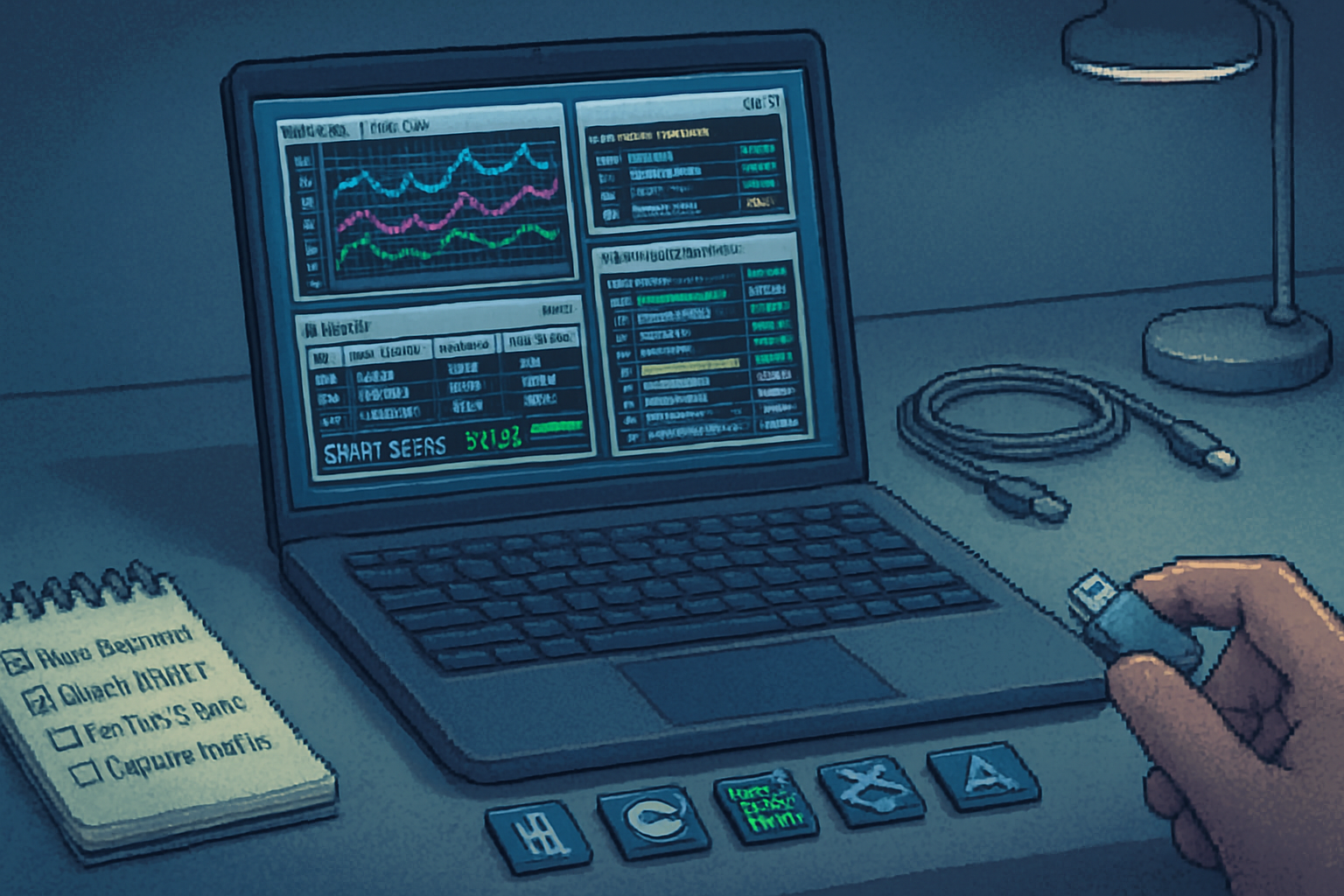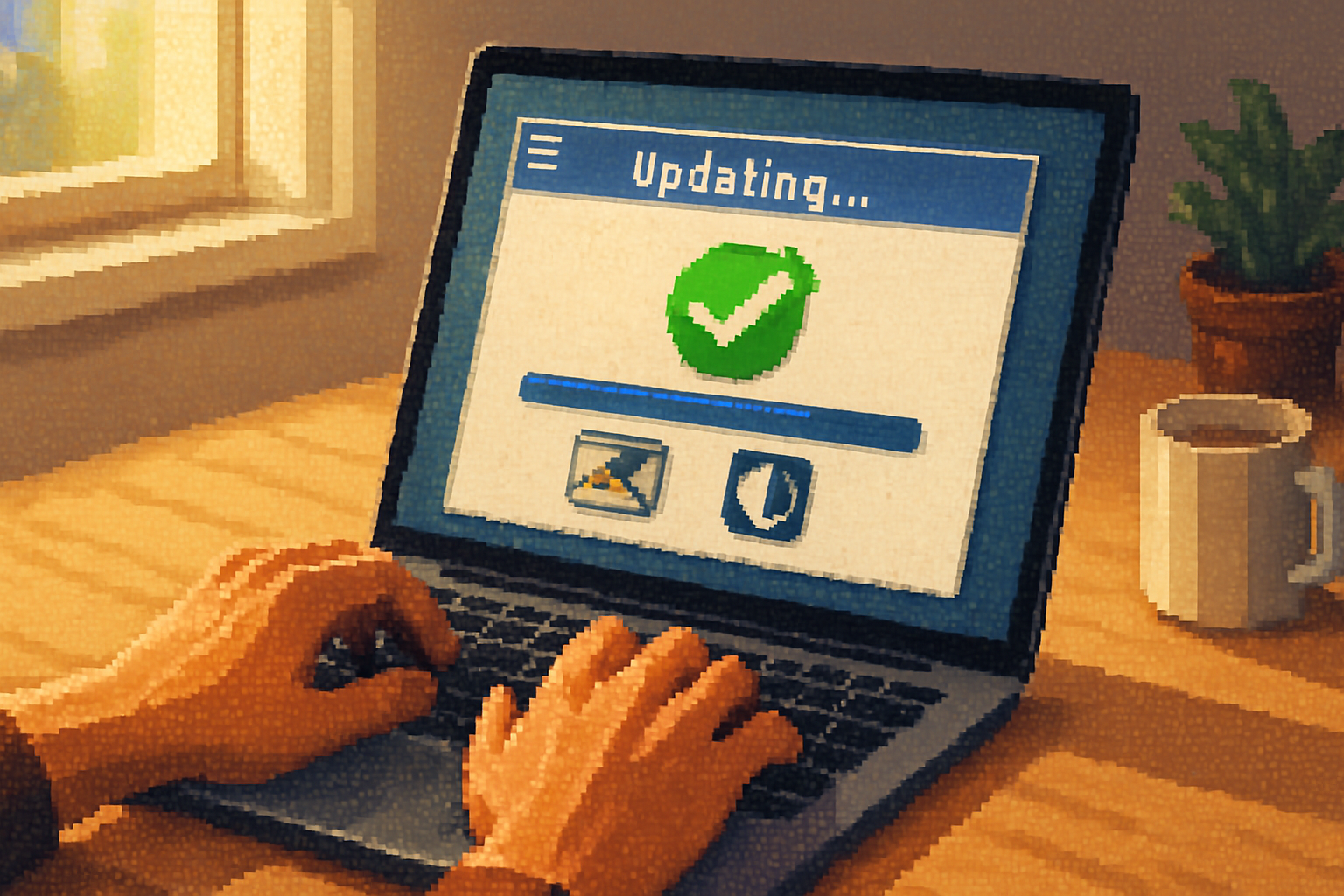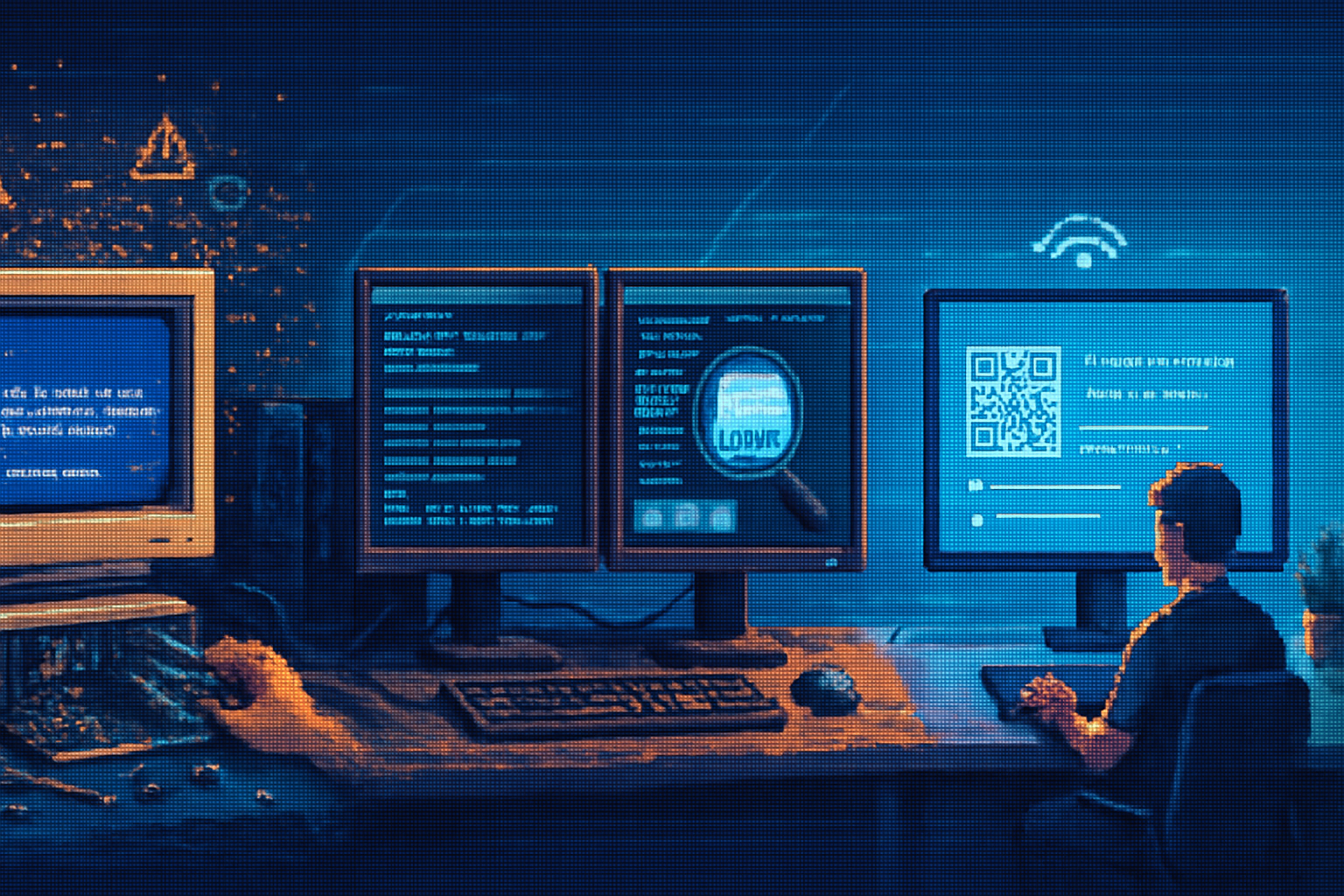· 6 min read
The Dark Side of Free PC Diagnostic Tools: What You Need to Know
Free PC diagnostic tools can be helpful - but they also carry hidden risks: malware, privacy leaks, aggressive upsells and misdiagnoses. This deep dive explains the dangers, shows real-world examples, and gives step-by-step expert guidance to use such tools safely.

Introduction
Free PC diagnostic tools promise quick answers: what’s slowing your machine, which driver is failing, or whether your disk has bad sectors. Many are legitimate and useful - but a surprising number carry hidden costs: bundled adware, data exfiltration, remote-access scams, false positives that lead to dangerous “fixes,” or even drivers and components that destabilize your system.
This article explores the dark side of free diagnostic software and gives practical, expert tips to keep you safe while troubleshooting.
Why people turn to free diagnostic tools
- Cost - free = low barrier to try.
- Convenience - one-click scans are attractive when you’re stressed about problems.
- Variety - there are tools for hardware, drivers, event logs, startup items, and malware.
But convenience has trade-offs. Below are the major risks to understand before you click “Scan”.
Major risks and how they work
- Malware, adware and bundled PUPs
Free software is a common vector for potentially unwanted programs (PUPs), adware, and even outright malware. Some “diagnostic” apps bundle toolbars, trackers or installers that remain after you uninstall the main app. Others intentionally misreport problems to scare you toward buying a paid “fix.” These behaviors have been documented repeatedly by security researchers and consumer protection agencies Krebs on Security and the FTC How to avoid tech support scams.
- Privacy and telemetry
Many free tools collect usage data and system inventories. That can include installed software, hardware UUIDs, serial numbers, and even lists of running processes or files. Not all vendors are transparent about what they collect, how long they keep it, or whether they sell it to third parties.
- Remote-access and scareware scams
Some tools will prompt you to call a number or grant remote access to a technician. Malicious actors use this to charge exorbitant fees, install backdoors or steal credentials. The combination of an alarming report plus an offered “helpful” remote session is a classic scam FTC.
- False positives and destructive “repairs”
Many free optimization tools flag dozens or hundreds of “issues” (tracking cookies, registry entries, startup items) and encourage you to click a single button that deletes or repairs them. Removing certain drivers or registry entries without understanding them can break software, remove important logs, or cause data loss.
- Privilege escalation, unsigned drivers and unstable components
Some diagnostic tools install drivers or kernel-mode components to access hardware-level information. Unsigned or poorly written drivers can introduce blue screens, instability, or security vulnerabilities.
- Supply-chain risk and update servers
A reputable tool can become dangerous if its update servers are compromised. Automatically applied updates from unverified sources are another way malicious code gets distributed.
Real-world examples and reporting
- Scareware and rogue optimizer scams have been covered extensively by security journalists and researchers; see the general industry reporting at Malwarebytes Labs and investigative pieces like Krebs on Security.
- The FTC warns consumers about tech support scams, including fake diagnostic alerts and remote-access tricks: FTC guidance.
How to evaluate a diagnostic tool before you run it
- Reputation and vendor - prefer widely known, transparent vendors (Microsoft Sysinternals, major AV vendors). Check independent reviews and recent user reports.
- Microsoft Sysinternals is a trusted source for advanced diagnostic tools: https://learn.microsoft.com/en-us/sysinternals/
- Open-source vs closed-source - open-source tools allow community inspection; closed-source requires trust in the vendor.
- Digital signature and publisher - verify the executable is code-signed and the publisher identity matches what the vendor advertises.
- Hashes and checksums - when available, compare the downloaded file’s SHA256 hash with the vendor-published value.
- Portable versions - portable tools that don’t require installation are safer for quick checks.
- Privacy policy and EULA - scan for what data is collected and how it’s used.
- Independent scanning - upload suspicious installers to
Expert safety checklist - before, during and after scanning
Before you run a new tool
- Back up critical data. Make a full-file backup or at least a recent image.
- Create a system restore point (Windows) or a full disk snapshot for other OSes.
- Verify vendor reputation and digital signature; check file hashes if the vendor provides them.
- Prefer portable or read-only diagnostic tools for initial scans.
- If possible, test the tool on a disposable VM or spare machine first.
During scanning
- Disconnect from the internet if you only need a local scan; this prevents telemetry and blocking callback attempts.
- Run the scan with a non-administrator account when feasible; elevated privileges are only necessary for certain checks.
- Don’t accept unsolicited remote access or phone support offers generated by the tool.
- Read findings carefully - don’t hit any “Fix all” button without understanding each recommended change.
After scanning and before making changes
- Research any suggested removals - search for the process/driver/guid name online from reputable sources.
- Create a second restore point before applying changes or uninstallers.
- If a recommended fix requires uninstalling software or removing drivers, ensure you have installers or recovery steps available.
Safe alternatives: built-in and highly trusted tools
- Windows built-in - Event Viewer, Task Manager, Resource Monitor, Reliability Monitor, Disk Management, CHKDSK, SFC, DISM and Windows Security are powerful and safe first stops. Microsoft documentation helps with these tools.
- Microsoft Safety Scanner - a free on-demand scanning tool from Microsoft:
- Sysinternals Suite (Microsoft) for deep diagnosis: https://learn.microsoft.com/en-us/sysinternals/
- Use reputable AV vendors’ free scanners as a second opinion rather than unknown optimization tools.
Useful commands (Windows)
System File Checker:
sfc /scannow
DISM to repair the Windows image:
DISM /Online /Cleanup-Image /RestoreHealth
(See Microsoft docs for full guidance and prerequisites.)
When to use a diagnostic tool in a sandbox or VM
If you absolutely need to run an unfamiliar tool, do it in a virtual machine or sandbox environment (e.g., Hyper-V, VirtualBox, or a disposable cloud VM). This contains any misbehavior and prevents damage to your main system.
How to respond if you suspect a diagnostic tool caused harm or was malicious
- Isolate the machine - disconnect from the network to prevent data exfiltration or remote control.
- Collect evidence - note filenames, logs, screenshots and any support numbers shown.
- Run trusted offline/mounted scans - Microsoft Safety Scanner or a bootable AV rescue disk from a reputable vendor.
- Change passwords from a clean device if you suspect credentials were exposed.
- Consider a full system wipe and OS reinstall if you find signs of persistence (unknown services, scheduled tasks, unknown drivers).
- Report the tool to appropriate authorities or vendors and upload samples to VirusTotal for community analysis: https://www.virustotal.com/
Final thoughts and practical rules
- Free is not risk-free. Treat unknown diagnostic tools like any other software - vet, sandbox, backup and monitor.
- When in doubt, use built-in OS tools and vendor-trusted utilities. The convenience of a one-click fixer is rarely worth the potential for data loss or malware.
Quick reference - 10 expert tips to stay safe
- Back up before you scan or fix anything.
- Prefer trusted vendors (Microsoft Sysinternals, major AV vendors).
- Verify digital signatures and hashes when provided.
- Use portable or read-only scans first.
- Disconnect from the internet for local-only scans.
- Don’t accept unsolicited remote access.
- Avoid “Fix all” or one-click cures without research.
- Test unknown tools in a VM or sandbox.
- Use VirusTotal to check installers before running them: https://www.virustotal.com/
- If something looks suspicious, stop, isolate and investigate.
References & further reading
- Microsoft Sysinternals: https://learn.microsoft.com/en-us/sysinternals/
- VirusTotal: https://www.virustotal.com/
- FTC - What tech support scams are and how to avoid them:
- General reporting and analysis on deceptive optimizer/scareware tactics: https://krebsonsecurity.com/
- Malwarebytes blog (threat research and analysis): https://www.malwarebytes.com/blog/
Using diagnostic tools can be empowering - they help you understand your system and solve problems - but like any tool they can be misused or weaponized. A cautious, informed approach keeps your data and devices safe while still letting you troubleshoot effectively.


